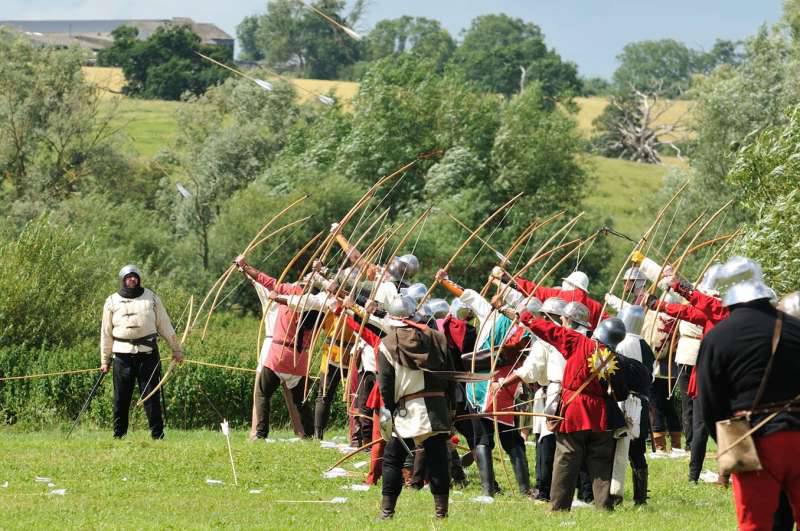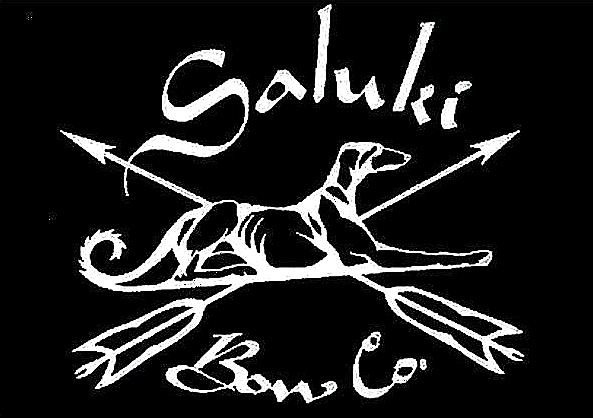Warbow
Warbow – The Heavyweight Division
Yes indeed! The bow and arrow have been used in warfare! While this aspect of archery may be unsavory to some, it is still true. In fact, the use of warbows in combat has been continuous from times forgotten to history, right up until the widespread use of gunpowder and firearms.
Interest in the warbow has grown in recent decades. Some military history enthusiasts want to know what it was like to draw and shoot heavy bows, as they were done in past battles. In this article, we will explore the warbow and its use throughout the ages
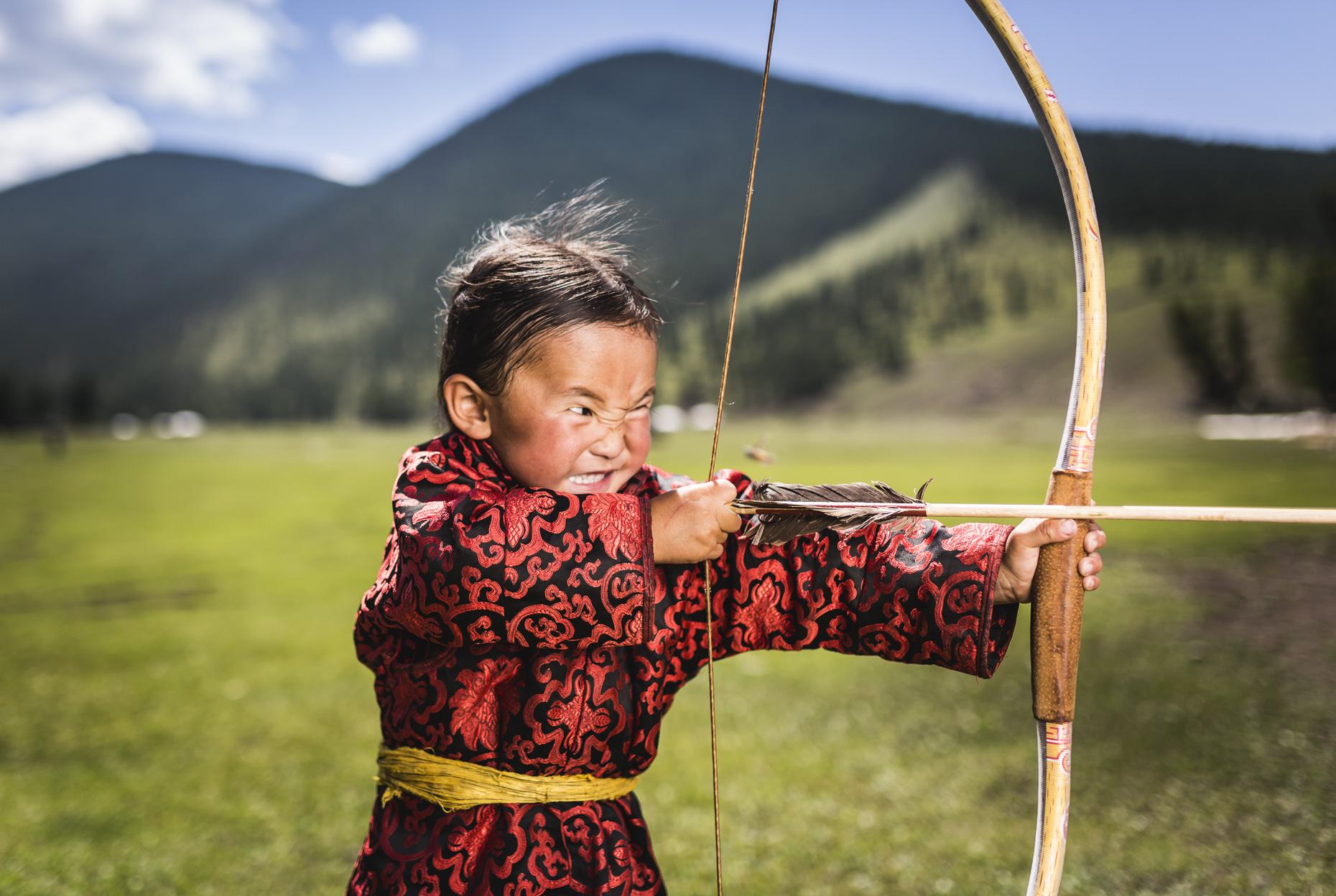
What is a Warbow?
First of all, let us define what a warbow is. We will define a warbow as a bow of historical design specifications and historical, military draw weight. Some English Longbows recovered from the Mary Rose, have been tested to be over 100 pounds at about a 30-inch draw.
It can be noted however that an archer’s ability to draw a heavy bow diminishes if he or she is mounted. Thus we will define warbow draw-weights to be over 70 pounds for bows intended to be used on horseback, and over 100 pounds for bows used on foot, such as the English or Welsh longbow.
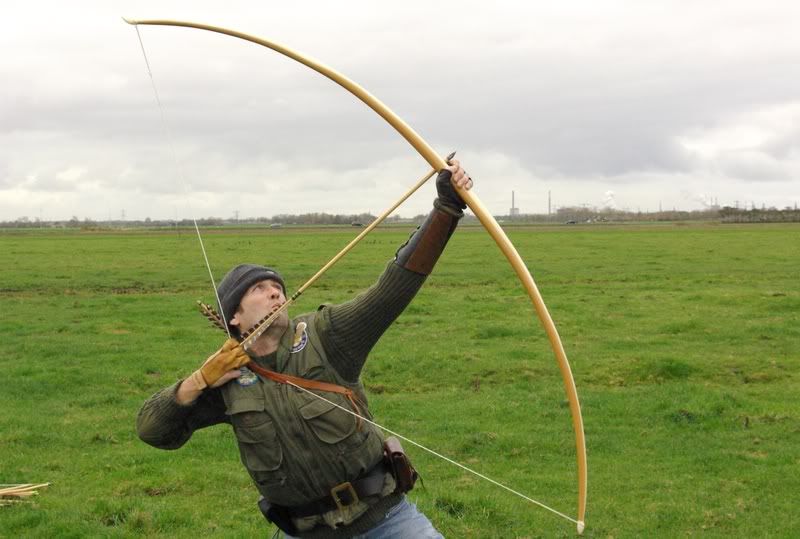
Warbow Book
Want to know more about warbows and archery history in general? We would highly recommend the recent publication (2019) of “War Bows” by Mike Loades. Mike Loades is well known and respected in the military history community as he has published several books on military history. He has also appeared in over 100 television documentaries such as Going Medieval (History Channel) and Weapon Masters (Discovery Networks).
This particular work (War Bows) covers in great detail the English longbow, Composite horse bows, as well as the medieval crossbow. With fantastic detailed illustrations and photographs, this is a must-read for archery and/or military history enthusiasts. Check it out via the link in the image below:
Warbow for Sale
So you want to buy a warbow and shoot some arrows with it as well? But of course, you do! Fortunately for us, there are many bowyers from around the world that have picked up where the ancient and medieval bowyers left off. We have gathered a list of some renowned bowyers that you may be interested in checking out. Click the images below for links:
Ravenbeak Naturworks
Made to the likeness of the original medieval longbows. They look fantastic! Click image for link.
Joe Gibbs, Hillbilly Bows
Made by the heavyweight warbow archer himself. Check out his Facebook page for bow inquiries. Click the image below for the link!
Boston Bows
Quality heavy warbow specialists. Check them out! Click the logo image below for more!
Lukas Novotny of Saluki Bows
An accomplished bowyer and archer. His composite bows are especially considered among the very best. Click the image below for more!
Notable Warbows
Quing or Manchu bow
The Manchu bows are some seriously heavyweight warbows. Not only were they heavy in draw weight, but they are also some of the largest and robust of the Asiatic composites. Unlike the Ottoman Turks who tested their bows via flight archery (distance shooting), the Manchu bow was designed for maximum energy deliverance. Accuracy and penetration were paramount.
Documents from 1736 record the archery examination results of some 3,200 men in the Hangzhou banner regiment. Of these 3,200 men, some 920 were only able to accurately use bows of 67 pounds or less. The majority of the soldiers, some, 2,200 men could comfortably shoot bows in the 80 to 133-pound range. Then the heavyweights in the group, some 80 bannermen, could accurately use bows in the 147 to 173-pound range. This latter group was definitely shooting warbows.
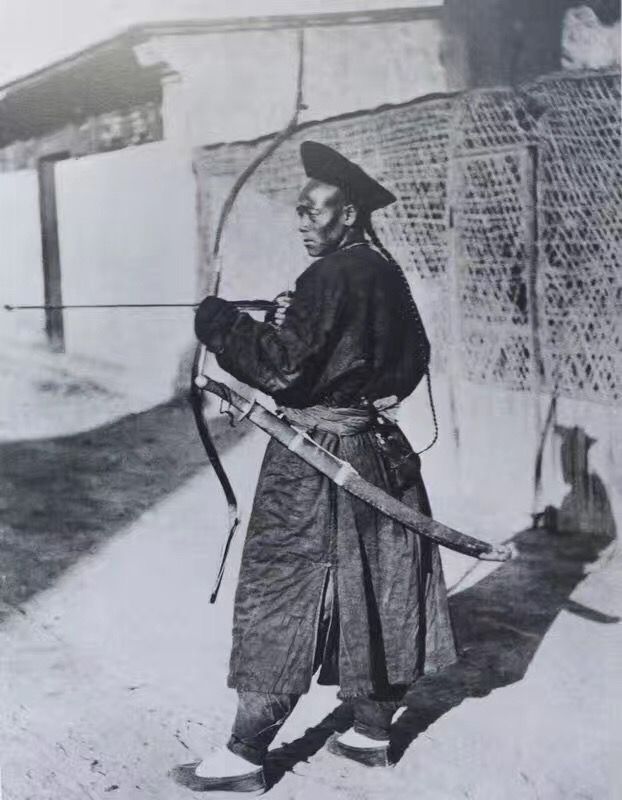
Japanese Yumi
In feudal Japan, bow draw weights were “measured” by the number of men it took to string the bow. Some warriors of legend, such as Tametomo had 5-men bows, meaning it took about 5 men to string the weapon. These were clearly extraordinarily heavy warbows. Most modern Yabusame (traditional Japanese mounted archery) archers shoot a bow around the 25 to 40-pound range. This could be considered a 1-man bow. Thus the 5-man bows of the heavyweights are in the 200-pound range which is within the limits of warbows.

Magyar Bow
The Magyar tribes swept into Western Europe in the 9th and 10th centuries. They came for plunder but eventually remained and integrated into Christendom. The preferred method of warfare for the Magyar was mounted archery.
Several grave sites have been identified that belonged to the first few waves of the Magyar migrations into Europe. One in particular: Sárrétudvari Hízóföld, was excavated in the 1980s. The site contained more than 260 people in 58 separate graves. Most were buried with the tools of the trade during the Conquest era. These included arrows, swords, axes, and bone plates used to reinforce their weapon of choice: the Asiatic composite bow.

When studying the skeletons of the deceased, it became clear that the bones had developed “musculoskeletal stress markers”. These stress markers can only come about after a lifetime of repeated stress on the muscles and bones. The bones of the upper and lower arm, as well as the clavicle (collarbone), were particularly stressed. These bones and the muscles that anchor to them are exerted extensively when engaged in archery, especially with heavy warbows. Please read this article by Forbes for more information!
